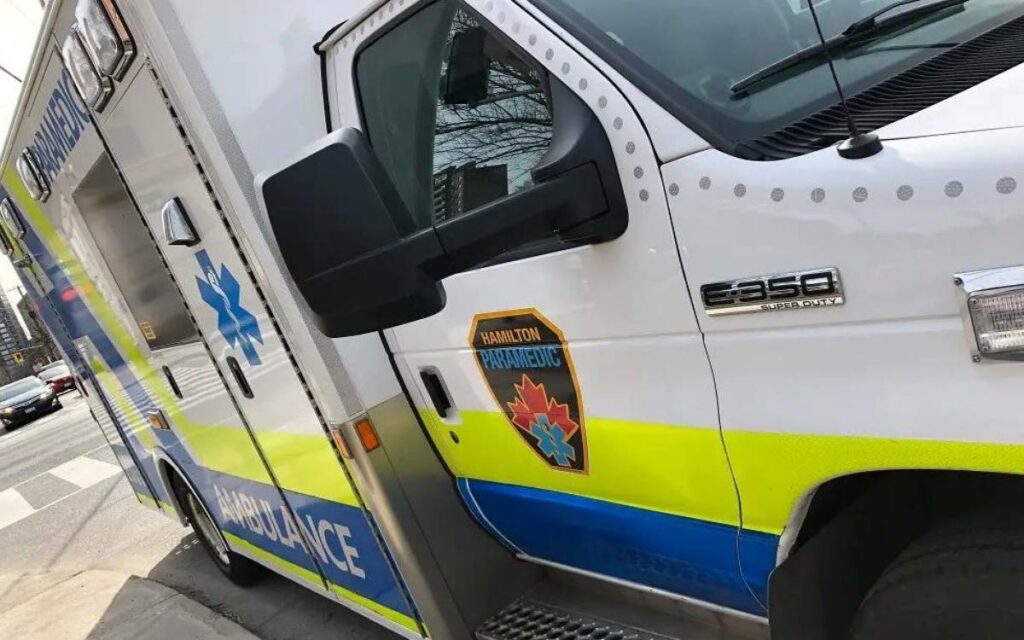
Nowhere else in Canada have paramedics been convicted in both provincial and federal courts. Photo credit: Twitter/HPS Paramedics
Earlier this week, Hamilton Spectator columnist Susan Clairmont wrote about the alleged mistreatment of a deceased person by the city’s paramedic service back in January. She cited a Hamilton resident, Bill Butterworth, who complained about how paramedics were caring for the body of his neighbour. According to Butterworth, the deceased man was on the ambulance stretcher with no blankets, wearing only his underwear.
“As they were wheeling him down the sidewalk, one arm was dangling down and swinging back and forth,” Butterworth described, “I know I would not like myself or a loved one to be transported in public in what I consider to be such a callous, embarrassing and undignified manner.”
If true, what Butterworth witnessed earlier this year represents only the latest in a long line of patient care problems for Hamilton EMS.
The roots of the problems at the paramedic service run deep.
On Jan. 29, 2011, a 20-year veteran Hamilton paramedic, Paul Zenchuk, responded to an emergency call for an unconscious 59-year-old male patient. The patient, Michael Farrance, would later die. After an Ontario Ministry of Health investigation, Paul Zenchuk became the first paramedic in Ontario to be charged for failing to provide patient care.
Zenchuk pled guilty to the charge and was later sentenced by the Ontario Court of Justice with 2 years’ probation and 200 hours of community service.
In response, the Hamilton Paramedic Service management team reviewed and modernized their Quality Improvement Program. The process included supervisors conducting paramedic field evaluations, compliance checks, documentation reviews, and reporting back to the quality care program. However, the paramedic unions representing both the supervisors and the paramedics vehemently resisted.
The supervisors and paramedics took their grievances to the City’s General Manager of Community and Emergency Services Joe-Ann Priel.
Priel was involved in her own controversy, when she and six other city employees took a city owned van to Washington DC and participated in an anti-Trump woman’s March. Local media reported she did not receive pre-authorization to use city-owned resources prior to the out-of-country trip.
Given that Priel’s portfolio included paramedic services, she heard the union complaints and subsequently re-assigned the Paramedic Chief to another department (Public Health) and terminated the Deputy Chief responsible for quality improvement in patient care. She then hired a new Paramedic Chief from Niagara Region, Michael Sanderson.
Then, in 2017, Hamilton paramedics Steven Snively and Christopher Marchant responded to an emergency gunshot call for 19-year-old Yosif Al-Hasnawi. The patient was shot by an assailant using a .22-calibre handgun loaded with a hollow-point bullet. Al-Hasnawi would later die.
In another first for the profession, the two paramedics were criminally charged for failing to provide the necessaries of life contrary to Section 215(3) of the Criminal Code. Whereas Zenchuk was the first to be charged under a provincial statute, paramedics Snively and Merchant were the first in Canada to be criminally charged under the Criminal Code of Canada.
After hearing all the evidence, Justice Arrell concluded that both Snively and Merchant were guilty as charged. Thereafter, both paramedics were sentenced to 6 months house arrest, 12 months curfew, and 150 hours of community service.
In an interview with the CBC, Mario Posteraro, President of OPSEU Local 256, the union that represents Hamilton paramedics stated, “it sent both a chill through the paramedic profession, [and] a bit of a shockwave to the broader health-care sector as to what the potential precedent might be.”
A friend of the Al-Hasnawi family, Fira Al Najim, told the CBC that he believes the court ruling will change the paramedic practice for the better. “Hopefully there’s not going to be any case in the future. The paramedics are going to know not to deal with a patient like this,” he said. “When he’s telling you he can’t breathe, if he’s hurt, just take him to the trauma centre. Do your job. You’re not there to see if he’s acting.”
Recently, Hamilton City Council added another $1 million to the ambulance budget in order to hire an additional 10 paramedics. Although the additional paramedics will help with the increase in emergency call volume, it will do little to fix the multiple problems with the service overall.
Addressing the culture and the quality of patient care is also required.






